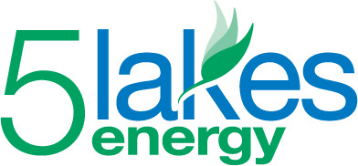I think about renewable energy and energy efficiency a lot. One of the more common myths of renewables that I hear when talking to my friends, family, and neighbors is that renewable energy costs more than “regular” energy. Let’s start with “regular” energy.
I’m guessing when people say “regular” energy they mean coal. And it is very true that the United States is the Saudi Arabia of coal because of the deposits in the east and west. The coal is not in Michigan so we import all that we need for meeting demand. Also, this “regular” energy – at least in Michigan – is being produced in plants that are on average 50 years old. This means that we need new plants and soon.
This also means that the costs of those plants now is low, because they were paid for in your rates over the last 50 years. An average cost of electricity from those plants in Michigan (actually off the MISO grid but we won’t get into that today) is $.03 per kilowatt hour. Pretty cheap, huh?
Let’s talk about new plants since we need to deal with the aging of our coal fleet. Fifty year old plants are not what we want to rely on long-term from an efficiency perspective, an emissions perspective, and a reliability perspective. The MPSC sets the cost of energy from a new coal plant at $.13.3 per kilowatt hour. So what do renewables and efficiency cost?
The MI Public Service Commission completed a report in February that you can read here. The Renewable Portfolio Standard law includes a requirement that all renewables come in less than the cost of a new coal plant. The MPSC report showed that renewables are costing us less than the cost of a new coal plant. Wind, biomass, and biogas are around $.98 per kilowatt hour.
And energy efficiency? It costs around $.03 per kilowatt hour.
Yes, renewables can be intermittent, yes, there is a role for natural gas, and yes, we will have a diverse energy portfolio going forward. But let’s be innovative in Michigan about looking to the future and lead.
The best part is that Michigan has over 260 businesses doing advanced manufacturing in the renewables industry putting people to work keeping Michigan money in state. But more on that another day.
So, about that “regular” energy…
